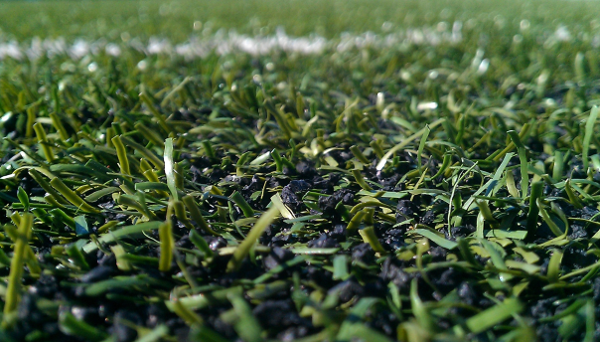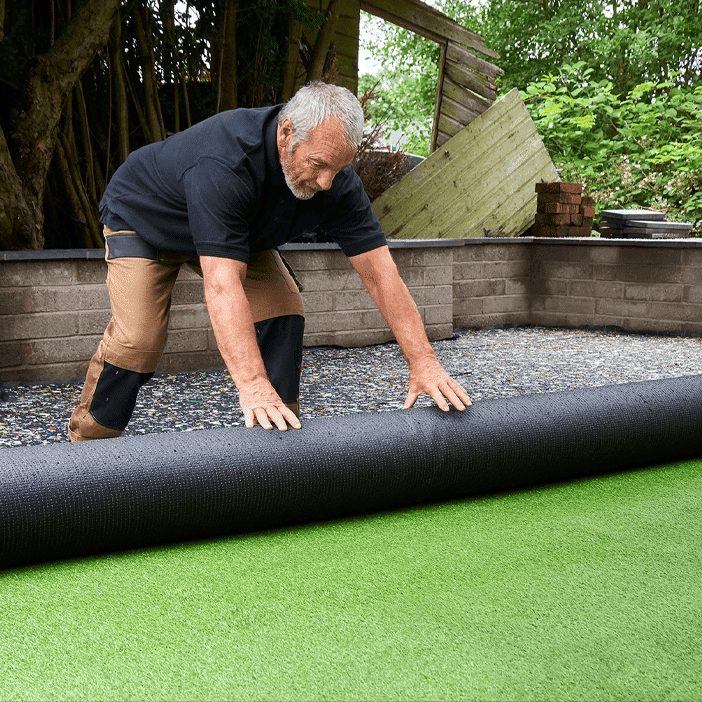Explore the Environmental Benefits of Opting for Synthetic Grass Solutions
The fostering of artificial lawn remedies presents a compelling possibility to address pressing ecological difficulties. By considerably minimizing water usage and reducing the application of harmful chemicals, these alternatives not only promote sustainable landscaping but likewise protect neighborhood ecosystems.
Water Conservation Perks
One of the most substantial benefits of man-made lawn is its capability to conserve water. In comparison, man-made lawn does not require watering, considerably decreasing the general need for water sources.
By getting rid of the need for regular watering, man-made lawn adds to sustainable landscape techniques and helps reduce the environmental effect of excessive water usage. In addition, the conservation of water reaches the reduction of runoff, which can lead to soil erosion and waterway contamination.
Furthermore, the installment of synthetic grass permits home owners and districts to allot water resources more effectively, concentrating on crucial usages such as alcohol consumption water and agriculture. The change in the direction of man-made grass not only promotes accountable water use yet additionally aligns with broader environmental goals targeted at protecting natural deposits.
As communities significantly focus on sustainability, the water preservation advantages of fabricated lawn provide an engaging instance for its adoption in residential and business landscape design tasks.
Lowered Chemical Use
The shift to synthetic grass significantly lowers the reliance on chemical therapies generally utilized in natural turf maintenance. Traditional lawn administration commonly entails the application of herbicides, fertilizers, and chemicals to promote growth and control parasites. These chemicals can present threats to human wellness, neighborhood wildlife, and the environment, adding to soil and water contamination.
In contrast, synthetic lawn removes the demand for these harmful substances. When installed, it needs very little upkeep, largely being composed of routine cleaning and seldom infill replenishment. This decrease in chemical use not only profits the prompt setting yet additionally contributes to more comprehensive ecological stability. By minimizing the release of synthetic substances into the community, synthetic lawn advertises healthier dirt and water supply.
In addition, the absence of chemical drainage connected with synthetic turf installments helps protect regional rivers from contamination, sustaining marine life and preserving biodiversity. Artificial turf companies phoenix. As areas progressively focus on sustainable methods, selecting synthetic grass offers a viable solution that lines up with ecological conservation objectives. With this shift, residential property proprietors can delight in rich environment-friendly areas without compromising ecological wellness, leading the way for a much more lasting future
Lower Carbon Footprint

Moreover, the installation of man-made turf can result in significant water preservation. All-natural yards call for substantial quantities of water for irrigation, which not only includes in the carbon impact connected with water removal and treatment yet likewise stress regional water sources. In contrast, synthetic grass needs very little maintenance, requiring no watering, thereby dramatically lowering water usage and its connected power expenses.
In addition, the durability of synthetic turf adds to its reduced carbon effect. With a life expectancy of up to 15 years or even more, the requirement for regular substitutes is decreased, resulting in much less waste and lower power usage in manufacturing and getting rid of standard turf options. Generally, synthetic lawn presents a sustainable option for environmentally conscious landscape design.
Environment Preservation
Habitat preservation is an essential factor to consider in the discussion over landscape design selections, particularly when contrasting man-made turf to all-natural lawn. All-natural turf yards usually require considerable maintenance, consisting of using herbicides, chemicals, and fertilizers, which can adversely More Bonuses influence local communities. These chemicals can seep right into the dirt and waterways, damaging native plants and fauna and interrupting neighborhood habitats.
Fabricated turf gets rid of the need for unsafe chemicals, therefore safeguarding close-by wild animals and maintaining the integrity of bordering communities. The installation of fabricated grass can lead to the conversion of former lawn locations into even more biodiverse landscapes, such as pollinator gardens or native plant areas, which can sustain local wild animals.
Eventually, the shift to artificial turf not just conserves water and reduces maintenance initiatives yet also fosters an important site extra unified connection in between human tasks and the all-natural setting, advertising environment preservation in the procedure.
Long-Term Sustainability
Long-term sustainability is a critical consider reviewing the advantages of synthetic grass over traditional turf yards. One of one of the most considerable advantages of synthetic grass is its durability; it can last approximately 15-20 years with marginal maintenance, whereas all-natural turf requires regular reseeding and substitute. This durability lowers the need for constant sources, such as water, fertilizers, and chemicals, which are essential for keeping a healthy grass yard.
In addition, synthetic grass adds to a reduction in carbon discharges related to grass care equipment. Traditional yards typically require gas-powered lawn mowers, trimmers, and blowers, every one of which contribute to air pollution. Artificial turf companies phoenix. On the other hand, artificial lawn eliminates the demand for such devices, promoting a cleaner setting
Moreover, the production of synthetic grass progressively makes use of recycled materials, improving its sustainability account. As makers take on eco-friendly methods, the ecological footprint of synthetic turf continues to lessen.

Final Thought
The adoption of artificial turf options provides substantial ecological advantages, including considerable water conservation, minimized reliance on hazardous chemicals, and a lower carbon footprint. Furthermore, synthetic grass aids in preserving all-natural habitats by decreasing land disturbance and advertising long-term sustainability with the usage of sturdy materials. Collectively, these aspects highlight the capacity of artificial turf to add positively to ecological health and offer a sensible alternative to traditional landscape design techniques in an increasingly resource-conscious world.
In comparison, fabricated grass does not need watering, considerably reducing the overall demand for water sources. By decreasing the launch of synthetic substances right into the environment, fabricated turf promotes healthier soil and water systems.
Additionally, the setup of fabricated grass helpful site can result in significant water conservation. In comparison, synthetic turf requires minimal maintenance, requiring no watering, thus significantly reducing water use and its linked power costs.
